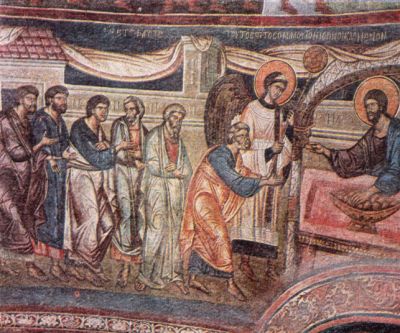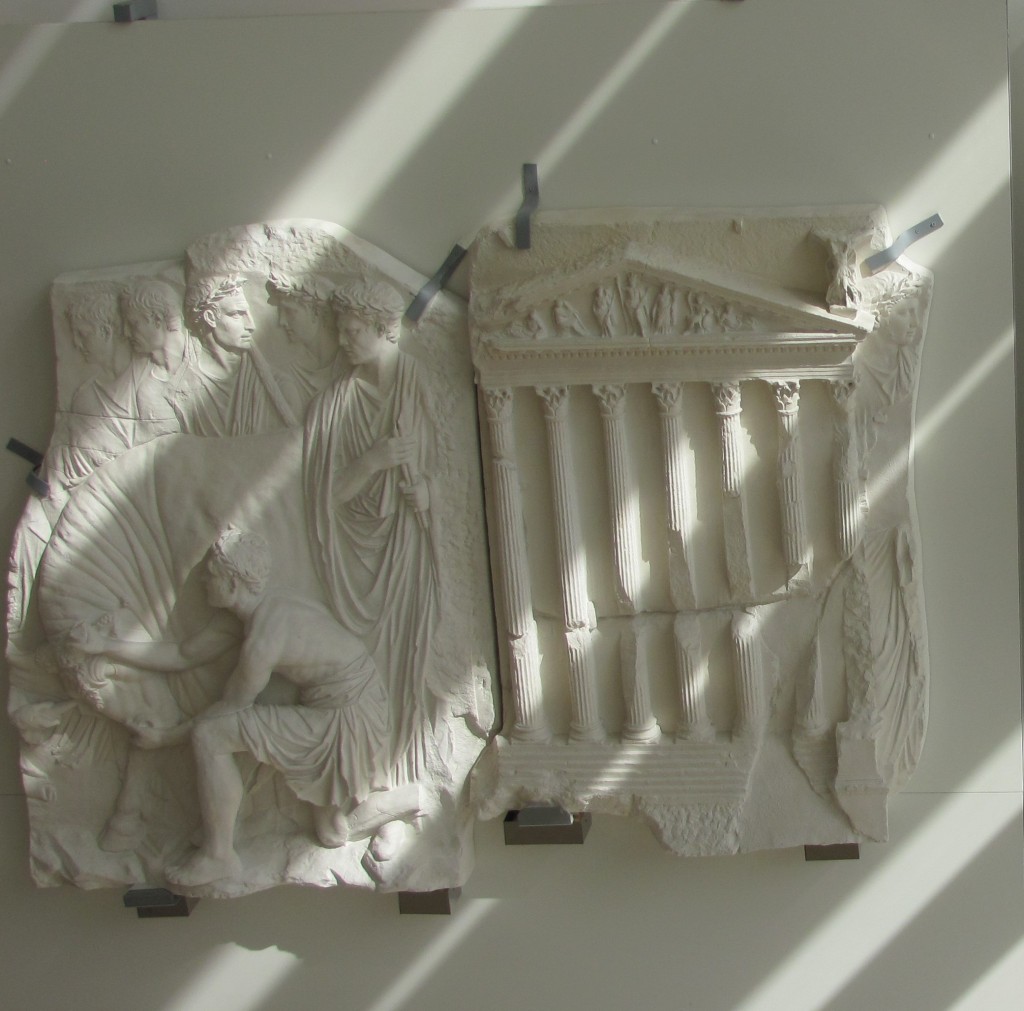It’s Palm Sunday today. We are about to enter the busiest season of the church year. The Book of Common Prayer has a collect, epistle reading, and Gospel reading for every day from now until next Sunday, Easter. While many won’t be able to make it to church every day this week, there are quite a few of us who will make it to Maundy Thursday and Good Friday, maybe also a vigil on Easter Even/Holy Saturday.
One year in high school I had an orchestra concert one of the nights of Holy Week (Maundy Thursday, maybe?). I commented to a fellow musician that my dad wouldn’t be able to make it because there was church every day that week as we remember the different events from Palm Sunday to Easter. The response was that we should remember those things every day.
Well, yes, of course.
But we can’t actually have a church service that covers every. single. thing. every. single. day. Or even every. single. Sunday.
Instead, we have the Church Year, the big version of sacred time. Sacred time, of course, has multiple layers. In terms of marking it, we have the daily rhythms of Morning and Evening Prayer, the weekly rhythm of every Sunday being a mini Easter (and in some traditions, fasts on Wednesday and/or Friday), and the yearly rhythm of the many feasts and fasts.
My brother and I already have a podcast episode about the meaning of the seasons and feasts, so I wish to go a different direction, one that turns us back to my trombone-playing comrade of c. 2001.
The absolutely central reality of Christianity is the fact that God became man so that man might become God. Our manifold sins and wickedness are healed by this reality. Our great potential is fulfilled by this reality. Our understanding of Who God Is is bodied forth by this truth. Everything surrounding this reality — the events of Jesus’ life on earth, the preparation and history of God’s people leading up to it, the record of those events, the ongoing life of Christ in the Church through the centuries — is bound to the fact that God so loved the world that he gave his only-begotten Son, that whosoever believes in him shall not perish but have eternal life.
Indeed, from the beautiful reality of the Incarnation comes also the beautiful doctrine of the Most Holy Trinity.
Because God became man, we are disciples of the God-Man, Jesus the Christ. We, Christians, are bound to the divine life. We participate, in our own small way, in eternity. We grasp at infinity, and God gives us what we can handle. Because God took on humanity in every way except sin.
As Christians, as disciples of Jesus, we are called to remember this reality and keep it at the forefront of our devotion. Our devotion is not to a set of ideals or “values”. Our devotion is not to some generic unmoved mover we call “God”. Our devotion is not to the Bible. Our devotion is to the very specific, very real God Who became a man so that we might participate in the divine life. Our worship and our prayer and our moral lives and our everything is meant to be devoted to Christ Jesus Our Lord.
And as humans, we need this to be constantly brought before our hearts and minds, imprinted on our souls, filling us to overflowing.
As humans, we live in the ebb and flow of time. Every twenty-four hours, the earth completes a rotation, a day comes and goes. From the earliest days of our faith, we have ordered our days and our prayers with this rhythm — one of our earliest hymns is a hymn to Christ for eventide, the “Phos Hilaron”. We also have a cycle of daily hymns from Prudentius in the fourth century, not to mention the daily cycle of prayer mentioned in second- and third-century sources such as Tertullian, Origen, The Apostolic Tradition. We fill certain times of day with the remembrance of the God who became man so as not to lose sight of him.
But that’s not enough. Our cycle, based upon the harmony of the universe revealed in Scripture, also includes the seven-day week. And on a specific day of the week, our salvation was wrought for us as Christ trampled down death by death and rose from the dead. And so every Sunday, the first day of the week, we celebrate the resurrection. We keep Jesus and his salvation for us at the front of our minds in our communal gatherings.
But God’s salvation is too big to cram it all into a single day each week. We just can’t do it. And so we have the year-long cycle. Every 365 1/4 days, the earth completes a circuit around the sun. And so we remember the deeds wrought by Christ to save us in the course of the year, commemorating his deeds and teachings, recalling the teachings of his apostles and prophets as well.
This yearly cycle enables us as Christians to keep our hearts and minds focussed on Jesus and his saving grace, his saving acts, his saving of us. God became man so that man might become God. We need to remember this. If left to our own devices, many of us may simply preach through the book of Romans for six years. Or examine only the moral teachings of Jesus. Or double down on the Psalms.
But the church year fixes our eyes not just on the teachings of Jesus but on the God-Man Himself. The church is forced through its cycle of seasons and feasts and fasts and readings from the lectionary to confront the God-Man Himself and not shunt Him off to the side.
Christianity is not about the teachings of Jesus. Its about Jesus Himself. We need to keep Him, the Person of Jesus the Christ, God the Word Incarnate, at the centre of our vision, of our ethics, of our worship, of our Bible-reading, of our prayer.
The Church Year does that for us. This is the pastoral role of the church year. This is why we have the feasts and fasts, why we have seasons of Advent, Christmas, Epiphanytide, Gesimas, Lent, Eastertide, Ascension, Pentecost, Trinity, as well as Michaelmas, All Saints Day, the saints’ feasts, the feasts of our Lord. These are there to keep us focussed on Him and His salvation for us.
Christianity is not about ideology, ideals, or ideas.
It is about God becoming man so that man might become God.
Have a blessed Holy Week.















